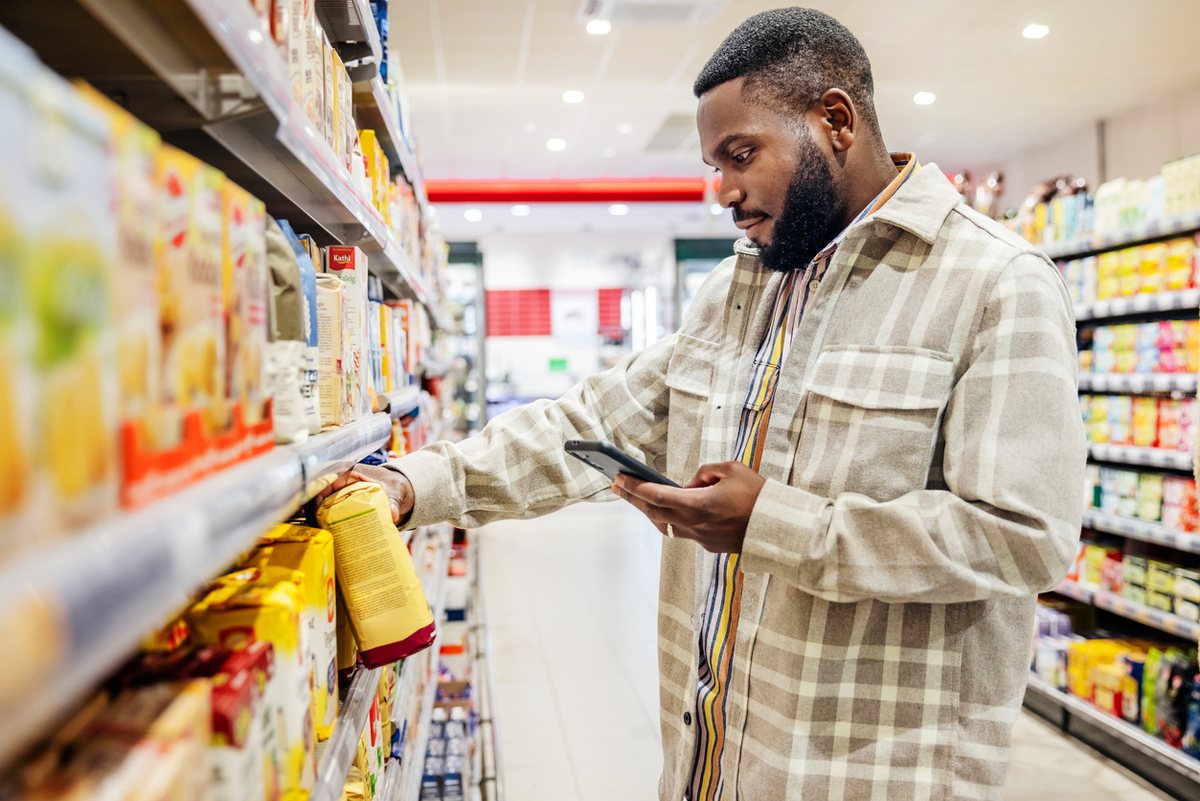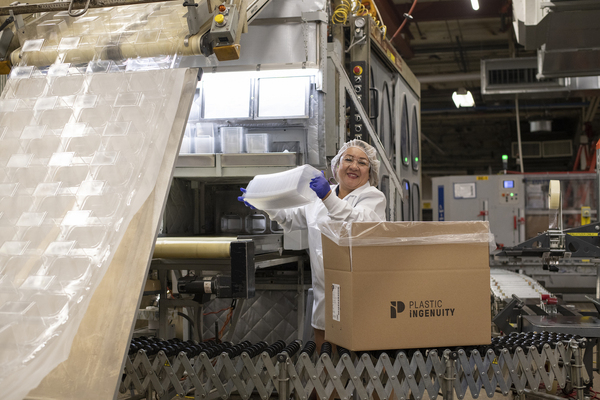Digital packaging for more powerful brands

In the fast-moving world of product packaging, digital printing technologies have emerged as a game-changer, offering businesses new opportunities to connect with consumers, share information and strengthen their brand identity.
Digital packaging is printed by a digital device using toner or inkjet technology. This is different to the more traditional offset lithography printing, which uses wet inks on printing plates. Digital technology has a part to play in the primary packing that surrounds products (such as the wrapping on a chocolate bar), secondary packaging (the presentation box individually wrapped chocolates are displayed in) and even in tertiary packaging (the packaging used to protect boxes of chocolates while they are being stored or shipped).
Benefits include faster turnround, printing on demand with easy to set up and very short print runs, and the ability to print on a variety of materials, not just paper. These can all reduce costs and increase ROI for manufacturers. But as well as greater efficiency, digital printing offers ways to increase profits by strengthen brands and promoting sales.
Increasing sales
Digital packaging can make it easy for customers to buy products again, as soon as they receive them, by printing QR codes or even NFC tags on primary or secondary packaging. This enables customers to reorder easily with a simple tap of their phone, streamlining the process by enabling the same payment and delivery address data to be used.
In addition, promotions such as tie-ins with TV advertising or information about sponsored events can be time-limited, only appearing on packaging while the information is relevant. Gifting can also be encouraged by the printing of personalised messages on primary or secondary packaging.
In some cases even tertiary packaging can be enhanced with digital messages, meaning that the recipients of a package can get a positive welcoming message even before they have started to open the box. This can be particularly important with luxury goods, where tertiary packaging can be used to display branding, enabling consumers to advertise to their neighbours (or just to themselves) the fact that they have been shopping somewhere expensive.
Strengthening brands
Digital printing also has a role to play in strengthening brands in subtler ways, enabling greater creativity, allowing personalisation and proclaiming sustainability.
Creativity and information
Digital printing allows brands to break free from traditional constraints, enabling vibrant colours and intricate designs such as holograms to be used. AI technology can be integrated to allow poor-quality imagery to be enhanced.
Digital printing also facilitates the seamless integration of informative content such as detailed product information or usage instructions through QR codes. This transparency builds consumer trust and enhances the overall product experience.
Packaging can also become an immersive interactive experience. Quizzes and games are becoming commonplace on packaging. Even augmented reality can be used: most famously with the Living Labels feature of wine brand 19 Crimes, where scanning the picture on the wine label pops up a movie of a notable criminal talking about their life.
Personalisation and agility
Every consumer is different: the messages that you will respond to are not necessarily the same as the one that will motivate me. Digital printing enables brands to tailor packaging, adapting designs for different age groups, cultural preferences or seasonal variations.
The ability to print small batches with cost-effective customisation facilitates greater creativity, experimentation and responsiveness to rapidly changing market forces. For fast-moving consumer goods, even a change in expected weather patterns might be the cue for different packaging.
Sustainability
As sustainability continues to increase in importance for consumers, digital printing allows brands to align with eco-friendly practices. Reduced waste, use of environmentally friendly inks and packaging materials and the ability to print on demand help reduce the ecological footprint of manufacturing. And, of course, it enables brands to explain to their customers how they are being more sustainable.
Protecting brands
Counterfeit products pose a significant threat to brands, eroding consumer trust and impacting profits. Digital printing technologies offer some powerful anti-fraud measures.
Unique identifiers, holographic elements and microtext can be used to protect brands and enable counterfeit products to be identified more easily by customers and law enforcement alike. Unique NFC tags that are impossible to clone can also provide authentication.
Track-and-trace capabilities can be seamlessly integrated into packaging so that goods can be followed from factory, to warehouse, to customer. Counterfeiters will find this impossible to replicate, protecting brands as well as safeguarding consumers from potentially harmful imitations. Track and trace packaging also helps limit warehouse fraud, where expensive items are substituted for cheaper goods by warehouse workers or delivery drivers.
The future of digital packaging
Artificial intelligence (AI) is key to the future of the packaging industry. It can be used to inspect packaging, and packages, for defects or errors – weakened packaging, for instance, or packages that are the wrong weight. With AI-powered computer vision manufacturers can spot microscopic imperfections, something that is particularly significant where sterile packaging is being used.
AI can also be used to enhance the information displayed on packaging. For example, by analysing data on consumer preferences, return rates and market trends, manufacturers can create packaging designs with AI that resonate with their target audiences, leading to enhanced customer satisfaction and ultimately to repeat purchases.
AI also has a part to play in making packaging more fit for purpose, for instance tying damaged goods rates to particular types of packaging and particular routes or customer types.
Digital printing is only one way the packaging industry is evolving. New sustainable packaging materials such as biopolymers are being developed, active packaging techniques are extending product lifecycles, and automation is reducing human error and guaranteeing the gentle handling of fragile items.
Together with digital printing, these and other advancements are bringing the packaging industry from the sidelines to the very centre of brand strength and organisational profitability.

Jeremy Swinfen-Green
Related Articles
Most Viewed
Winston House, 3rd Floor, Units 306-309, 2-4 Dollis Park, London, N3 1HF
23-29 Hendon Lane, London, N3 1RT
020 8349 4363
© 2025, Lyonsdown Limited. Business Reporter® is a registered trademark of Lyonsdown Ltd. VAT registration number: 830519543





